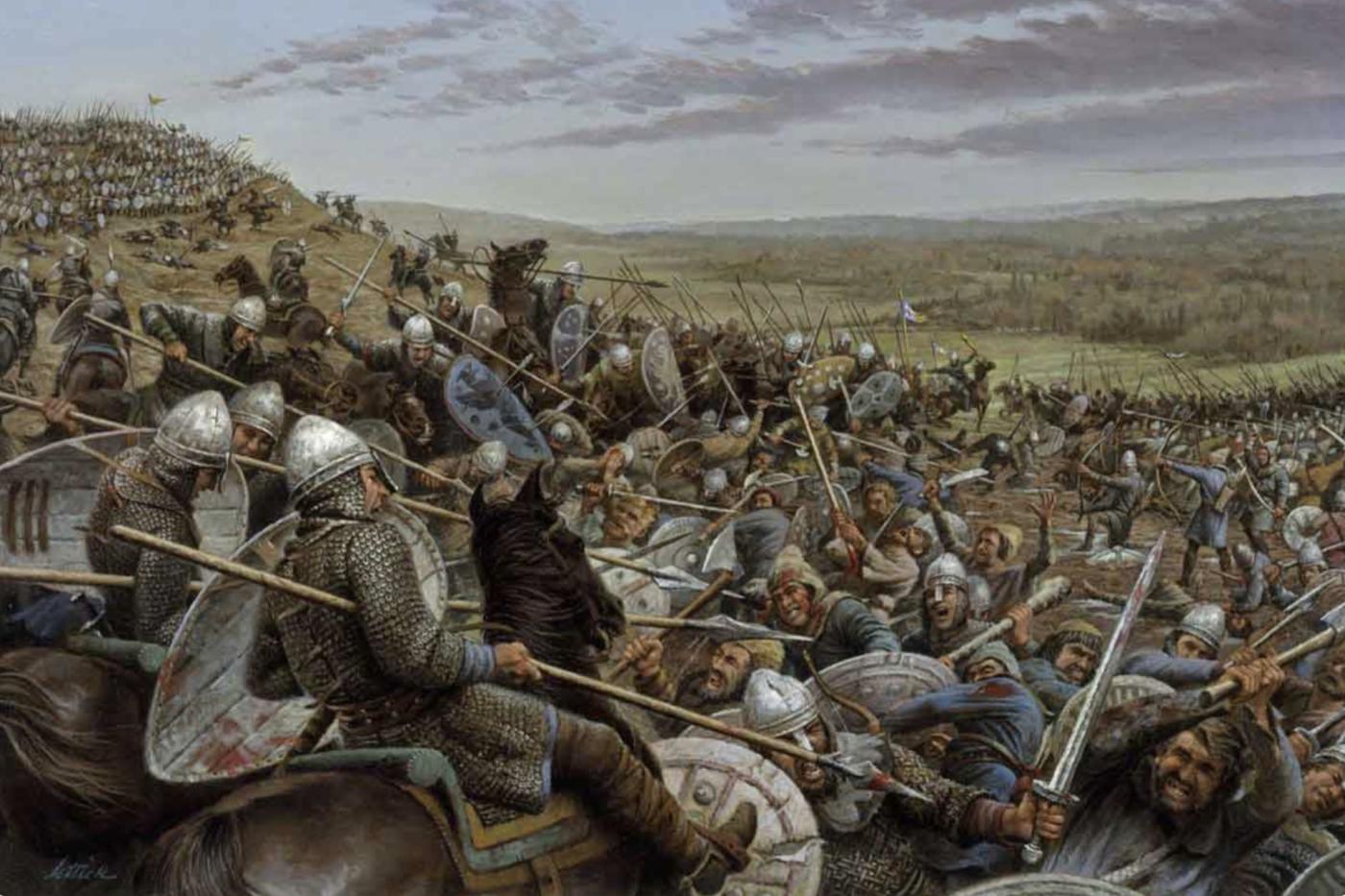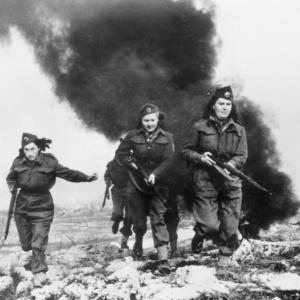
Historical Battle
The Battle of Hastings, fought on October 14, 1066, stands as one of the most significant military engagements in English history, marking the end of Anglo-Saxon rule and the beginning of Norman domination. This pivotal clash took place near Hastings in southeastern England and was the culmination of a power struggle for the English throne following the death of Edward the Confessor earlier that same year.
The two principal leaders at Hastings were King Harold II of England and Duke William of Normandy. Harold had claimed the throne upon Edward's death, but William argued that Edward had promised it to him years earlier and that Harold had even sworn an oath of support to William’s claim. With the backing of the Pope and an assembled fleet, William launched an invasion to assert his rights. Meanwhile, Harold had just repelled an invasion from the north by Norwegian king Harald Hardrada at the Battle of Stamford Bridge, only three weeks before Hastings. This earlier battle had depleted Harold's forces and left them fatigued after a long forced march south to confront the Normans.
Estimates of the number of troops involved vary, but historical sources suggest that Harold commanded approximately 7,000 men, consisting mainly of infantry, including his elite housecarls and a large contingent of the fyrd—local militia levied from across southern England. William's army was roughly similar in size, perhaps slightly larger, with about 7,000 to 8,000 troops. However, it was more diverse and better organized, composed of infantry, archers, and a significant cavalry force drawn from Normandy and other regions such as Brittany and Flanders.
The battle began in the morning and raged for most of the day. Harold positioned his forces atop Senlac Hill, forming a strong defensive line with his housecarls at the center and fyrdmen on the flanks. The English relied heavily on a shield wall formation, which proved initially effective in repelling Norman attacks. William’s army launched several assaults, but the shield wall held firm, and early in the battle, rumors spread that William had been killed. He reportedly lifted his helmet and rode among his troops to rally them, preventing a potential rout.
A turning point came when the Normans, perhaps unintentionally, executed a feigned retreat. This maneuver caused some of Harold’s less disciplined troops to break ranks in pursuit, weakening the shield wall. Seizing this opportunity, Norman cavalry and infantry exploited the gaps, and repeated use of the tactic further eroded the English line. Late in the afternoon, Harold was killed—accounts suggest he may have been struck by an arrow in the eye, followed by a final assault by Norman knights. With their king dead and their formation broken, the English forces collapsed.
The Norman victory at Hastings had monumental consequences. William was crowned King of England on Christmas Day, 1066, at Westminster Abbey, becoming William the Conqueror. His triumph ushered in sweeping changes to English society, law, governance, and language. The Anglo-Saxon elite was largely replaced by Norman nobles, and feudalism was introduced as the dominant system of landholding. The conquest also forged closer ties between England and continental Europe, particularly France, with lasting cultural and political ramifications.
In terms of weaponry, both sides used a range of arms typical of the period. The English housecarls wielded large two-handed battle axes capable of devastating blows, while the fyrd fought with spears, swords, and short axes. The Normans made effective use of archers, which allowed them to weaken enemy lines from a distance, and their cavalry—armored knights on horseback—proved crucial in breaking the English formation. The use of cavalry, in particular, gave William’s forces a tactical edge, allowing for rapid movement, charges, and the feigned retreats that contributed significantly to the outcome of the battle.
The Battle of Hastings was not merely a military engagement but a transformative event that reshaped the course of English history. It marked the end of the Anglo-Saxon era and the beginning of a new dynasty, introducing a different aristocracy, administrative structure, and cultural influences that would echo through centuries. Notably, it is often cited as the last time Britain was successfully invaded and fully conquered by a foreign power. In that sense, it can also be seen as the last war that Britain truly lost on home soil, with every subsequent conflict either repelled, fought overseas, or resulting in eventual recovery. The impact of that single day in 1066 is still felt in the fabric of British identity, governance, and language to this day.










